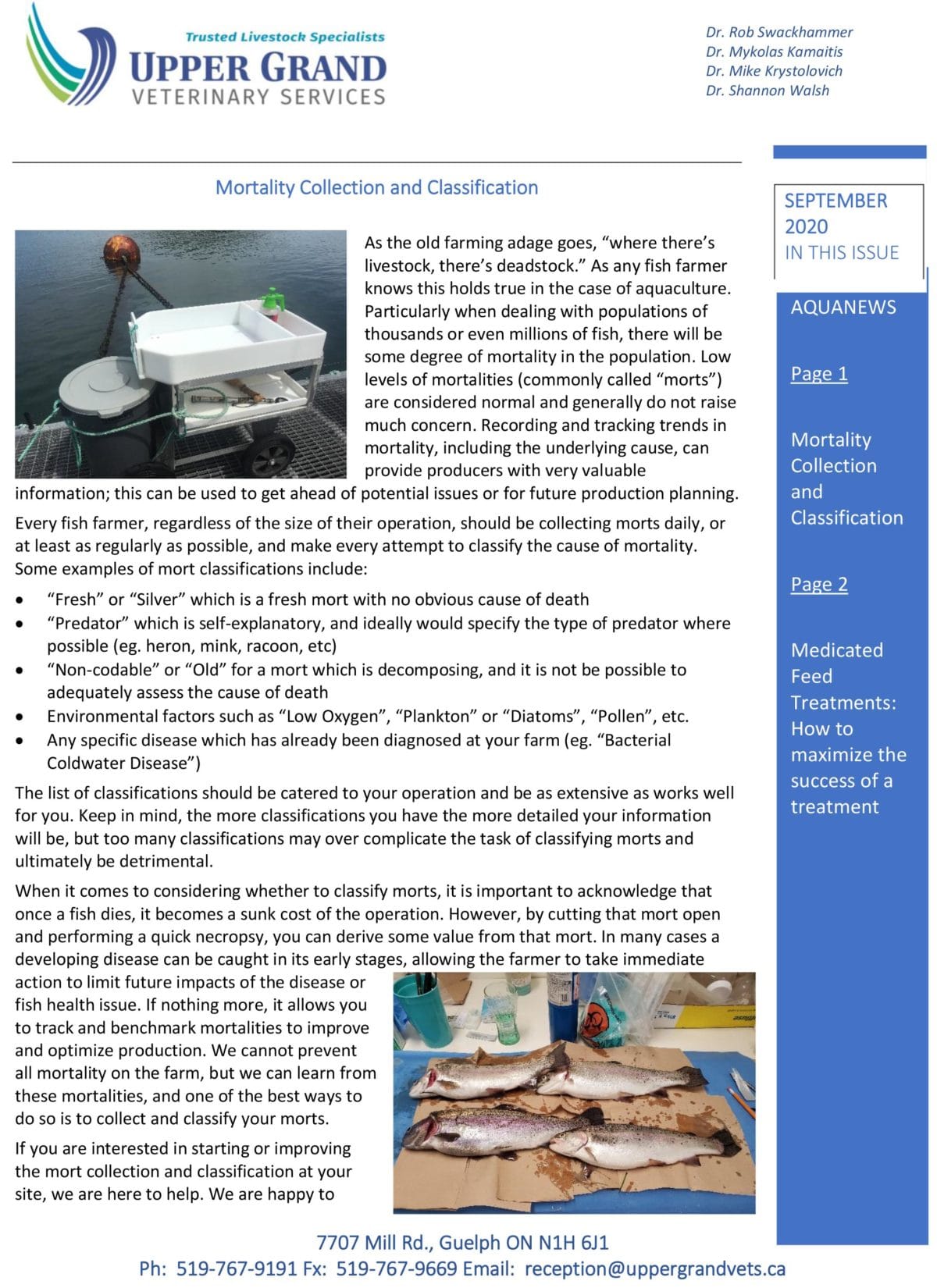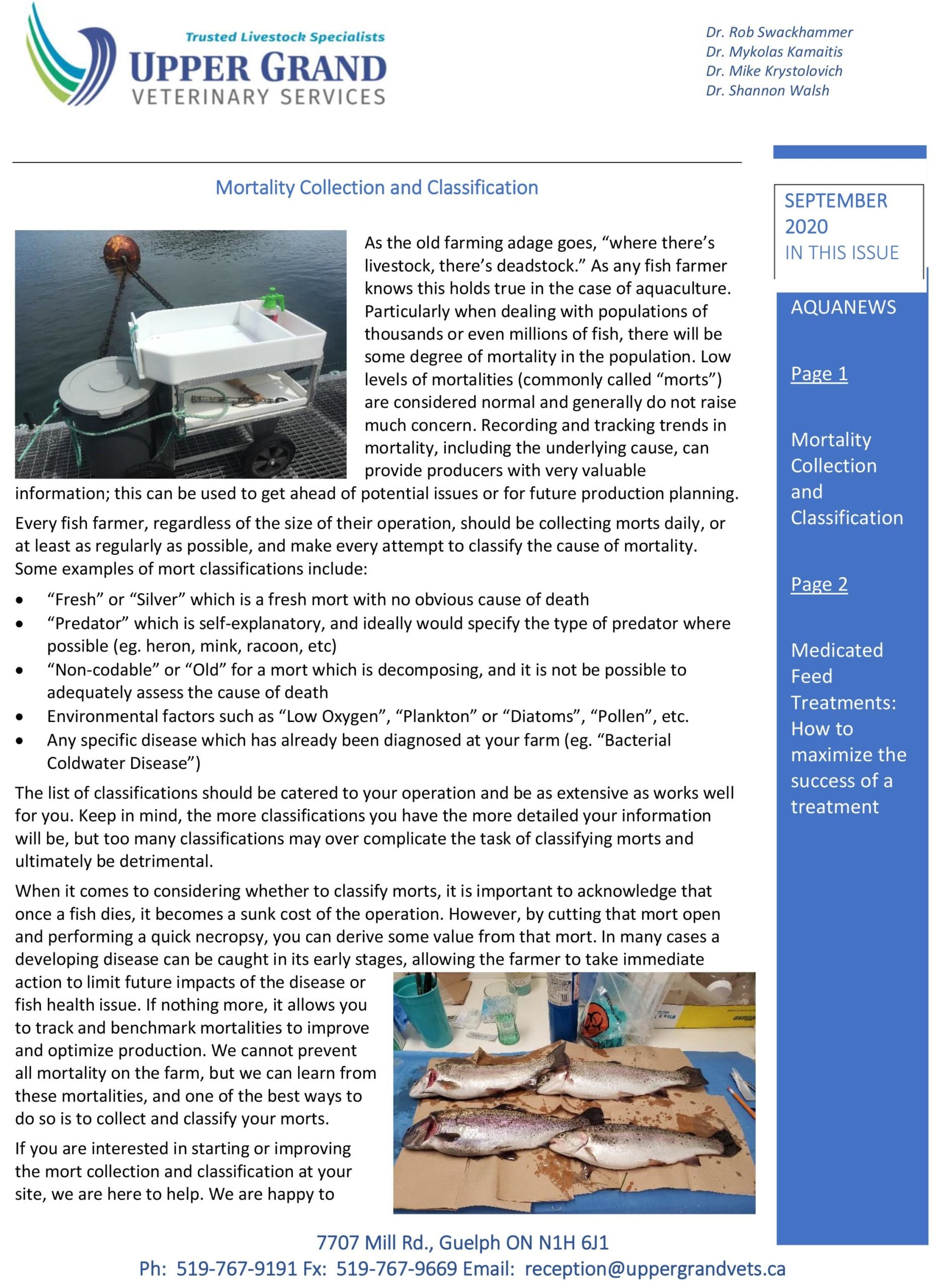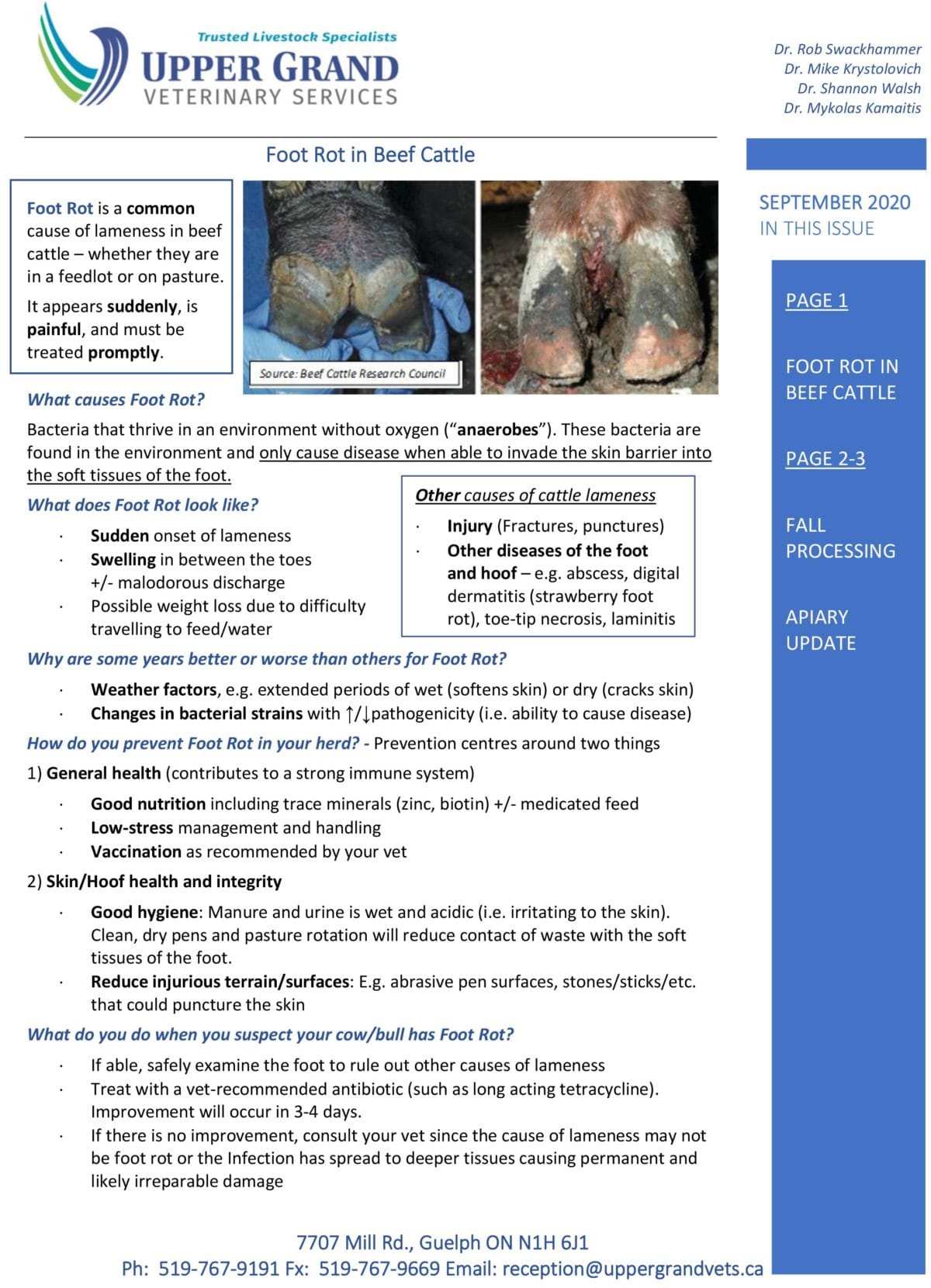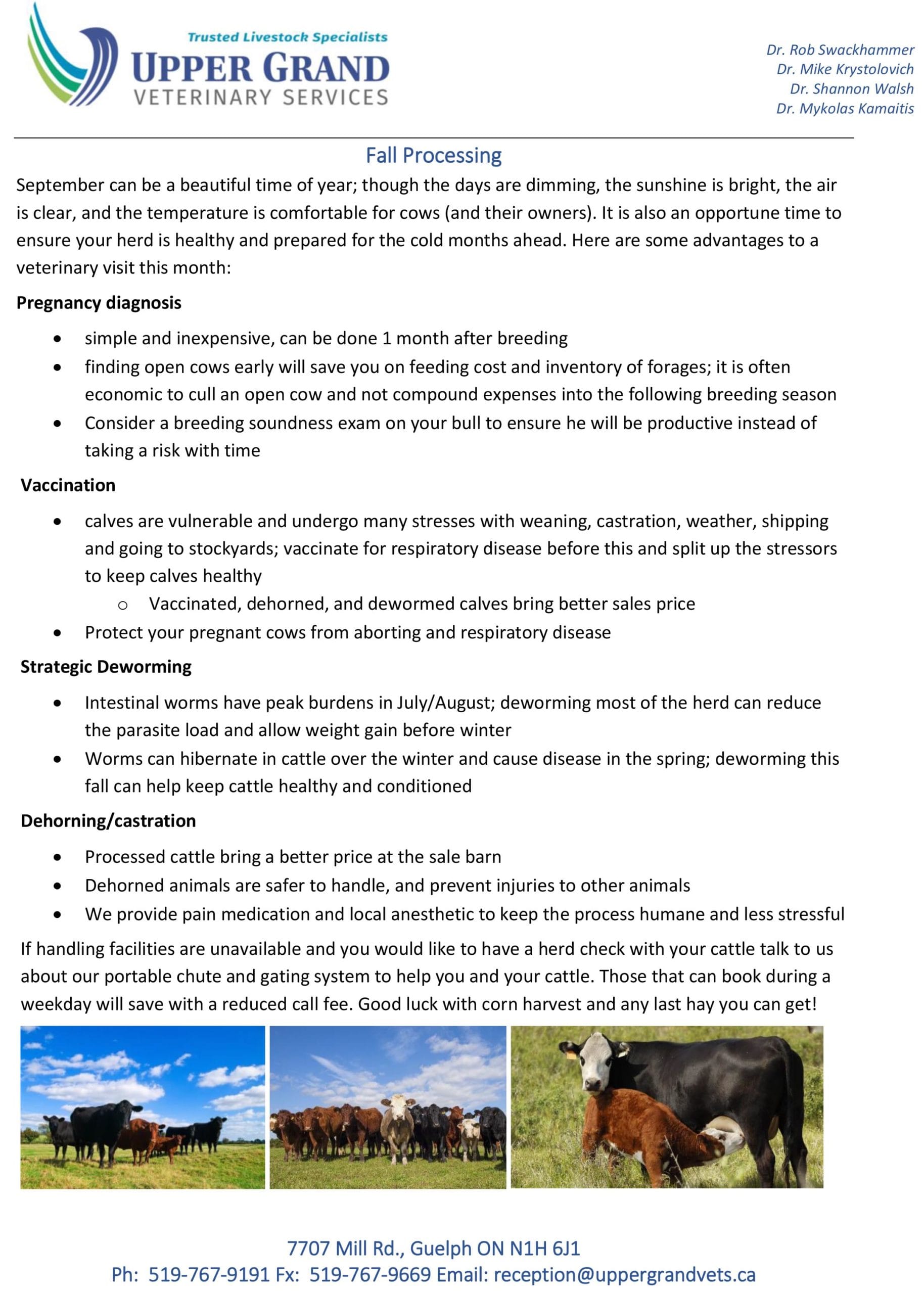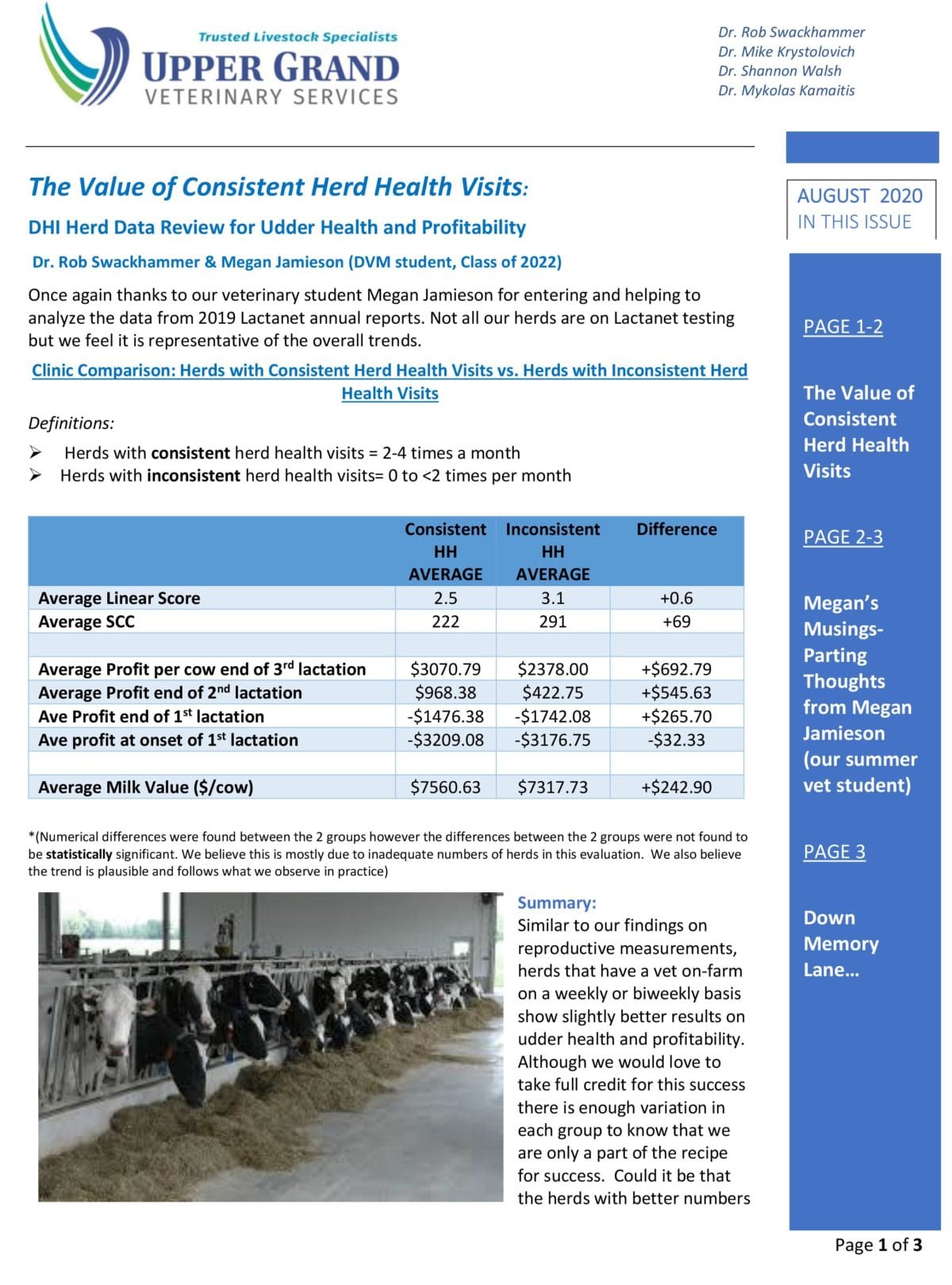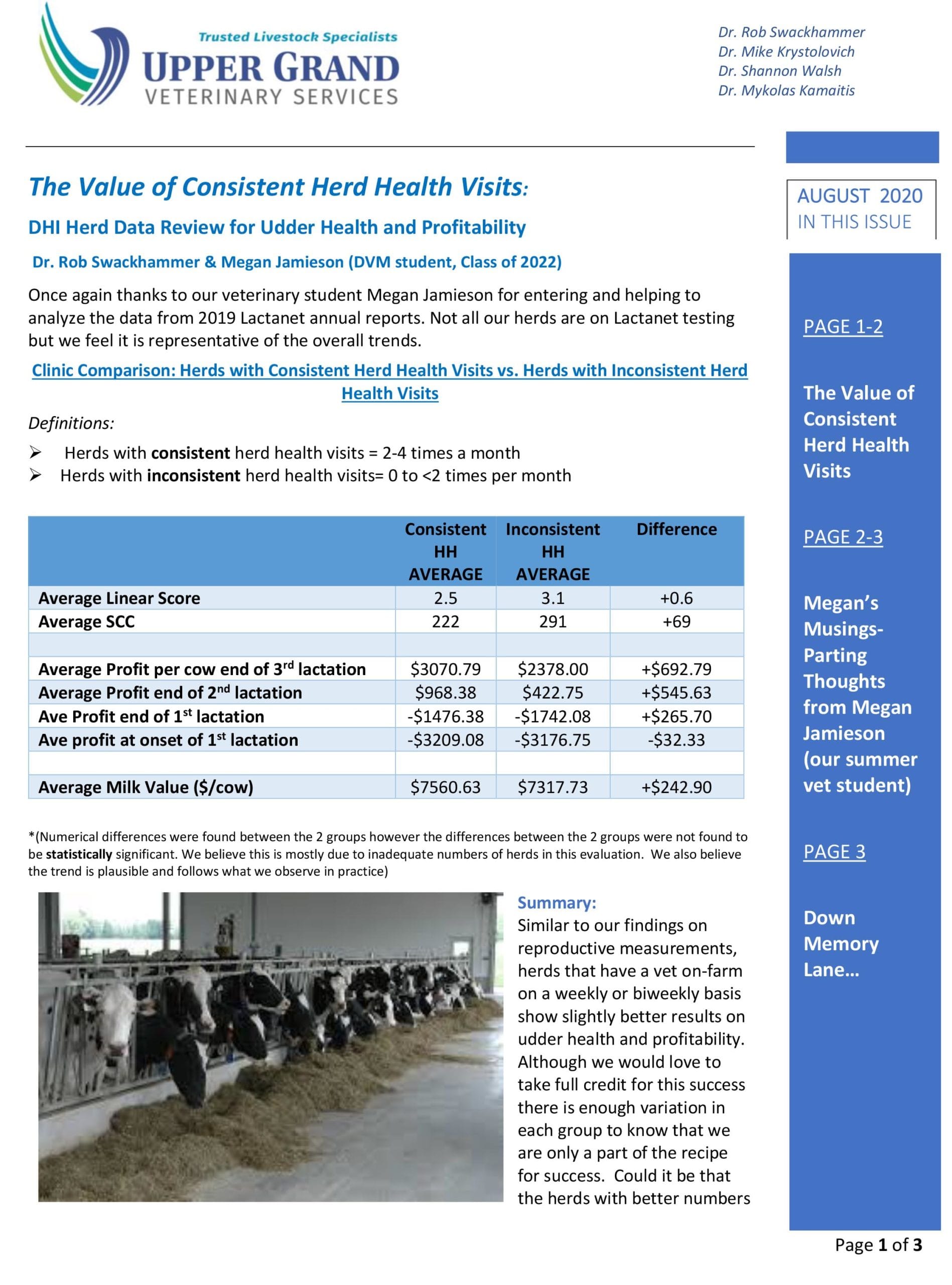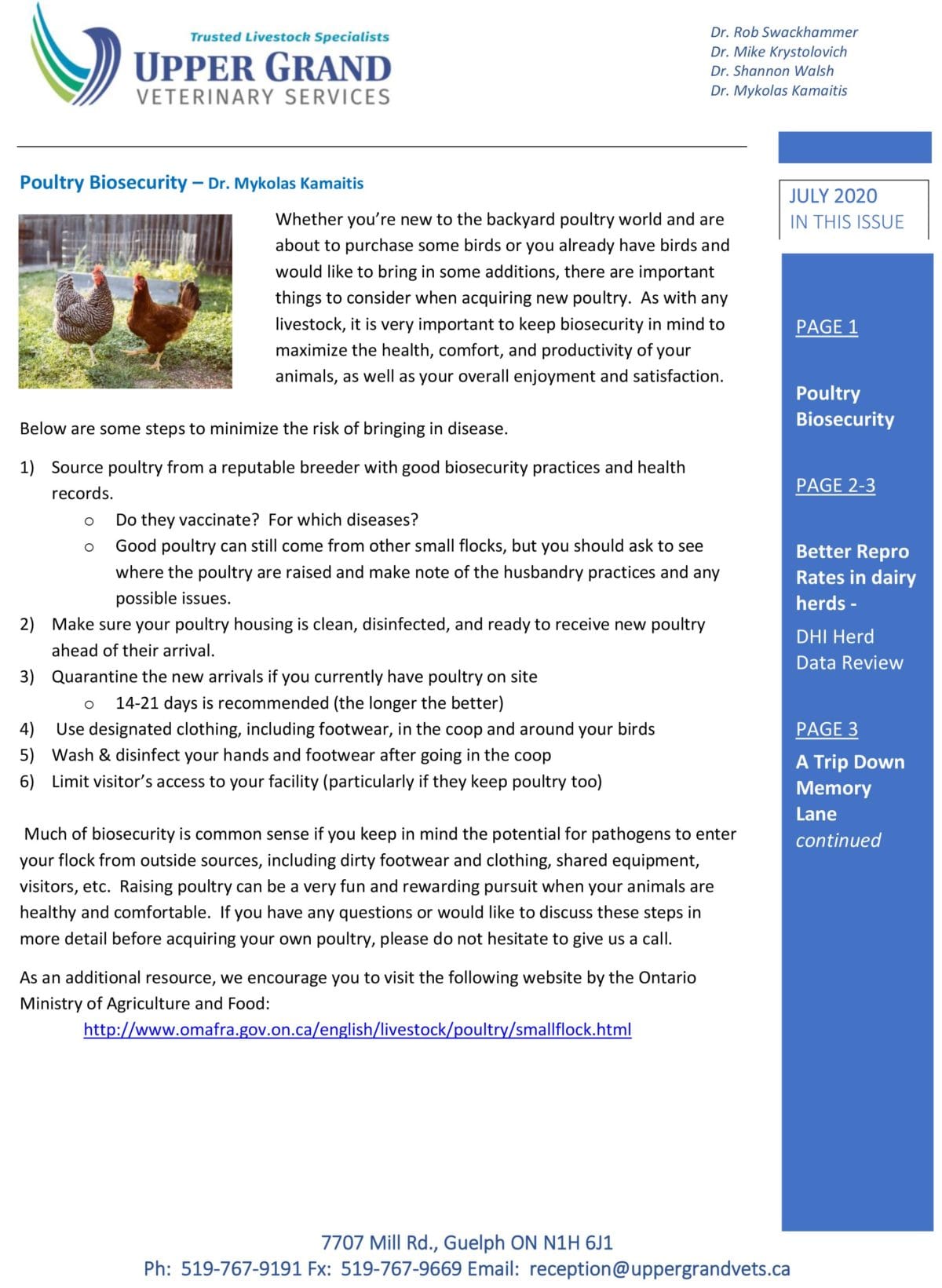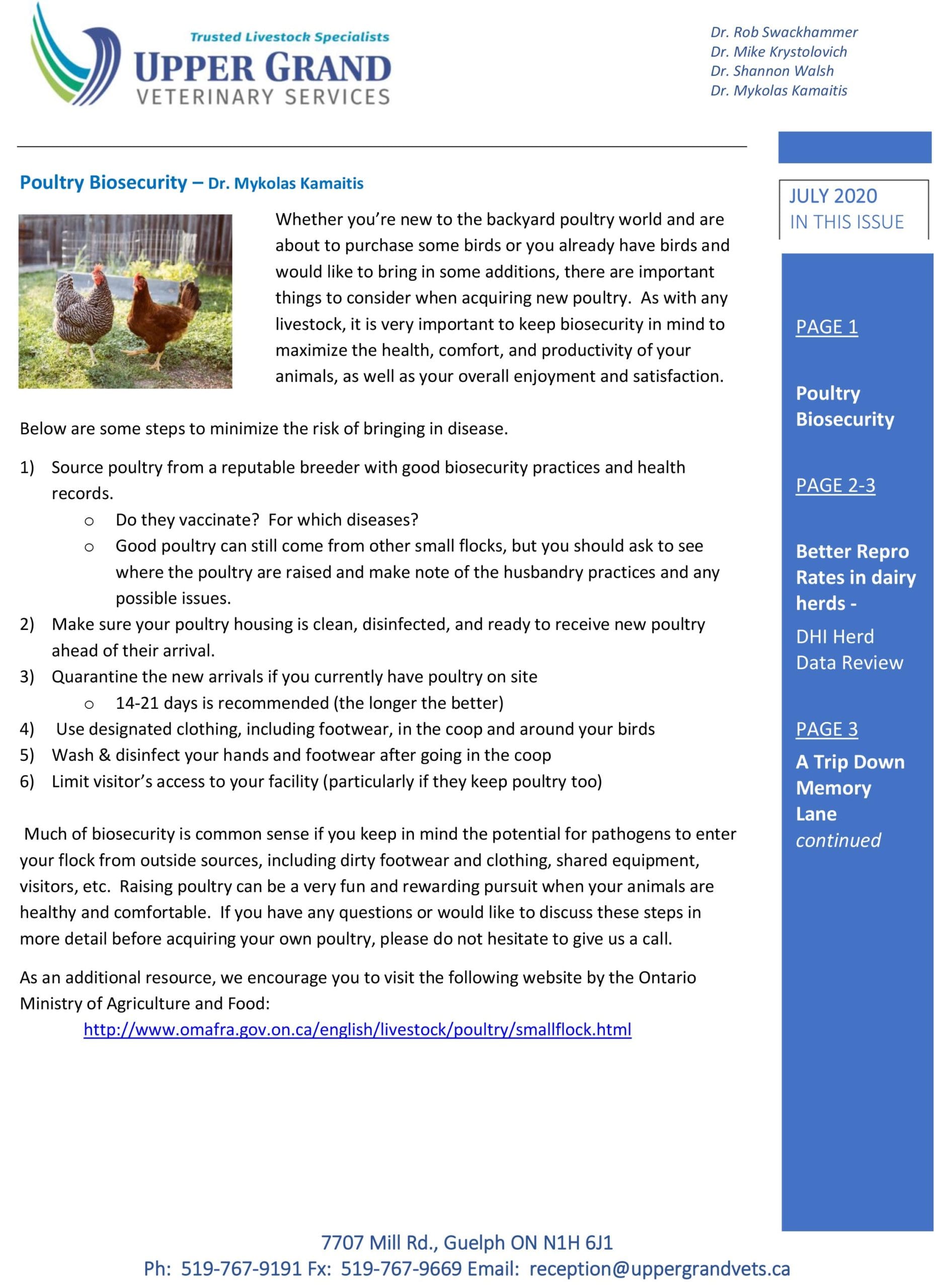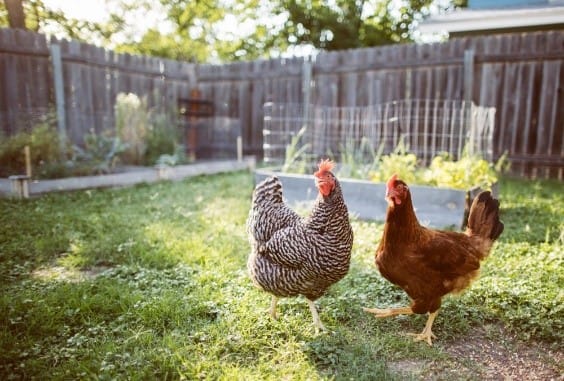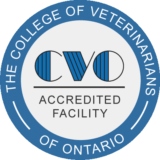“How Do I Get Better Repro Rates in My Dairy Herd?”: DHI Herd Data Review – Dr. Rob Swackhammer & Megan Jamieson (DVM student, Class of 2022)
Thanks to our veterinary student Megan Jamieson for entering and helping to analyze the data. We took the information from the producers’ 2019 Lactanet annual reports. While this does leave out a few herds we believe it is representative of the overall trends we see.
Clinic Comparison: Herds with Consistent Herd Health Visits vs. Herds with Inconsistent Herd Health Visits
Definitions:
- Herds with consistent herd health visits = a herd that participates in a routine herd health program with a
veterinarian (2-4 times a month)
- Herds with inconsistent herd health visits = a herd that inconsistently participates in a herd health program with
a veterinarian (0 to <2 times per month)
Data Summary – Cows:
| Consistent HH AVERAGE | Inconsistent HH
AVERAGE |
Difference | |
| Pregnancy rate % | 17.00 | 13.55 | +3.55% |
| Insemination rate % | 46.09 | 40.27 | +5.82 |
| Conception rate % | 38.91 | 34.09 | +4.82 |
| DIM at 1st breeding | 79.14 | 86.73 | Bred 7.59 days sooner |
| % pregnancy by 150 DIM | 49.91 | 39.45 | +10.46% |
| Times bred | 2.00 | 1.95 | 0.05 more breedings |
| % 1st service conception | 37.68 | 34.73 | +2.95 |
| Days open | 104.21 | 113.25 | 9.04 less days open |
| Calving Interval (months) | 13.33 | 14.04 | 0.71 less months between calvings |
Data Summary – Heifers:
| Consistent HH AVERAGE | Inconsistent HH
AVERAGE |
Difference | |
| Age at 1st calving (months) | 24.45 | 26.14 | Calving 1.69 months earlier |
| Age at 1st breeding (months) | 14.19 | 16.10 | Bred 1.91 months earlier |
| Age at conception (months) | 14.74 | 17.40 | Pregnant 2.66 months earlier |
| % heifers pregnant by 15 months | 45.39 | 21.88 | 23.51% more |
| Times bred | 1.87 | 1.93 | Bred 0.06 times less |
| % 1st service conception | 55.22 | 51.13 | +4.09% |
*(Numerical differences were found between the 2 groups however the differences between the 2 groups were not found to be statistically significant. We believe this is mostly due to inadequate numbers of herds in this evaluation. We also believe the trend is plausible and follows what we observe in practice)
Summary:
Although we cannot magically make repro rates better by walking on a farm, we believe part of the recipe for success in reproductive performance on dairy farms is to schedule consistent and timely herd health visits. By making it routine, fresh cows get examined quickly (30 DIM) to ensure their reproductive tract is healthy and ready to conceive. Bred cows get confirmed pregnant or diagnosed open in a more timely manner and thus rebred quickly. Problem cows get identified early and a suitable intervention applied to improve the chances of getting pregnant and thereby staying in the herd.
We believe there are many other benefits to having a veterinarian on the farm on a routine basis. Creating a close association with a trusted advisor allows important conversations to occur frequently.
In conclusion, we were very pleased to see the overall positive results of having consistent and timely herd health visits. Thank you to all the clients that give us the opportunity to work with you on your farms. We look forward to helping you achieve your goals for your farm.
Poultry Biosecurity – Dr. Mykolas Kamaitis
Whether you’re new to the backyard poultry world and are about to purchase some birds or you already have birds and would like to bring in some additions, there are important things to consider when acquiring new poultry. As with any livestock, it is very important to keep biosecurity in mind to maximize the health, comfort, and productivity of your animals, as well as your overall enjoyment and satisfaction.
Below are some steps to minimize the risk of bringing in disease.
- Source poultry from a reputable breeder with good biosecurity practices and health records.
- Do they vaccinate? For which diseases?
- Good poultry can still come from other small flocks, but you should ask to see where the poultry are raised and make note of the husbandry practices and any possible issues.
- Make sure your poultry housing is clean, disinfected, and ready to receive new poultry ahead of their arrival.
- Quarantine the new arrivals if you currently have poultry on site
- 14-21 days is recommended (the longer the better)
- Use designated clothing, including footwear, in the coop and around your birds
- Wash & disinfect your hands and footwear after going in the coop
- Limit visitor’s access to your facility (particularly if they keep poultry too)
Much of biosecurity is common sense if you keep in mind the potential for pathogens to enter your flock from outside sources, including dirty footwear and clothing, shared equipment, visitors, etc. Raising poultry can be a very fun and rewarding pursuit when your animals are healthy and comfortable. If you have any questions or would like to discuss these steps in more detail before acquiring your own poultry, please do not hesitate to give us a call.
As an additional resource, we encourage you to visit the following website by the Ontario Ministry of Agriculture and Food:
http://www.omafra.gov.on.ca/english/livestock/poultry/smallflock.html
If you have any questions on these or other topics, please do not hesitate to contact one of our Veterinarians.



